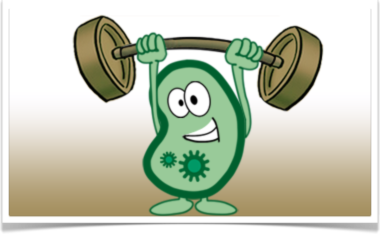Team:TU Delft/Project/rbs-characterization
From 2010.igem.org
Ribosome Binding Site Characterization
A ribosomal binding site sequence is a specific mRNA sequence that folds in such a way that it attracts the ribosome. This ribosome binds to the mRNA molecule and starts translation of the mRNA into protein.
As with many synthetically implemented pathways, the rate of conversion through the pathway is highly influenced by the expression levels of the proteins involved. While the way in which these protein levels have their influence on the rates is not yet fully understood, the simple bottle-neck explanation has generally been accepted in the community.
Consider the following pathway:
- alkane → alkanol ; catalyzed by LadA
- alkanol → alkanal ; catalyzed by ADH
- alkanal → alkanoic acid ; catalyzed by ALDH
If, for example, the protein expression level of ALDH is lower than that of ADH, a build-up of alkanal occurs, which will be toxic to the cell. Thus, in implementing our alkane degradation pathway we aimed to increase the protein levels in accordance with the conversion steps.
A perfect way to implement this variation in the alkane degradation pathway is by using ribosome binding sites with varying strengths. This led to the characterization of the ribosome initiation strengths of five Anderson RBS family members.

 "
"
